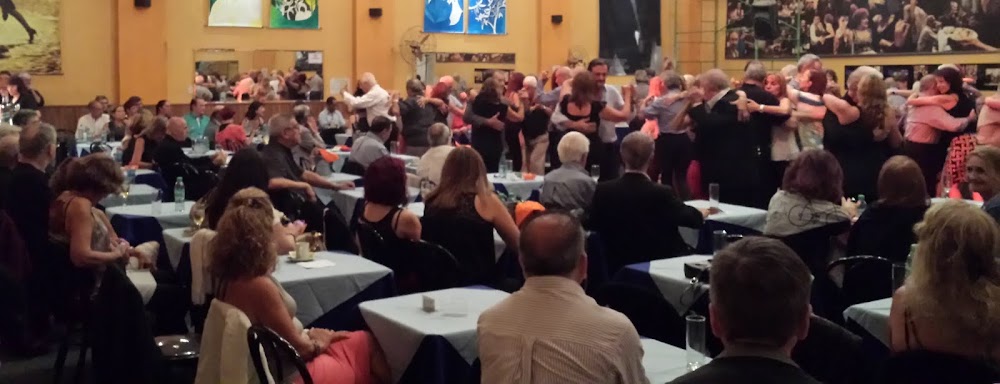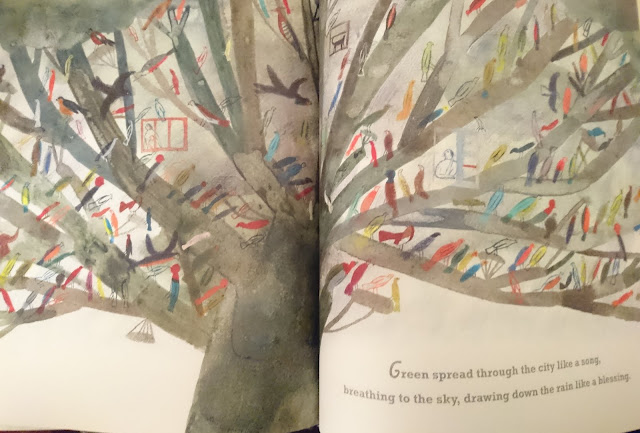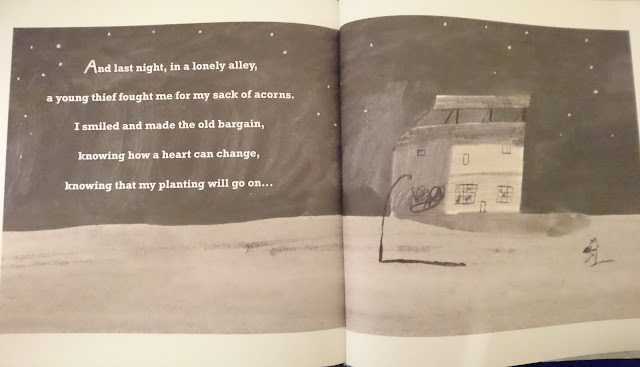It was just on Saturday night I felt again how we are often our best selves in dance and how wonderful it would be if learning to dance could, in other parts of life, be seen as the valuable thing that it is. Great then to stumble a day or two later over this quotation by Frankie Manning. I found it here after someone kindly sent me both the Dawn Hampton video I posted yesterday as well as this short podcast about how Frankie Manning got into dance.
It's hard not to like Frankie even in video - his relaxed, easy-going manner, how he looks, how he sounds. He said he had no plans to be a professional, or a teacher or a choreographer, he just wanted to dance. He reminds of Ricardo Vidort or Tete that way. They were social dancers who just happened to become teachers and they seemed to have transmitted the key things about social dancing rather than the things most teachers tell you about today.
In Buenos Aires I asked a lot of people - not everybody, but people I liked or thought had some insight - what a milonguero was, because it seemed it was a hard thing to pin down. Frankie seems to capture it when he says "Dancing was just a way of life." This is not what someone says for whom dance is primarily work, business or a livelihood. Frankie became a postal worker later on when the music changed. The milongueros in Buenos Aires are like that. A lot of them I was told have very ordinary jobs. They are plumbers and taxi drivers or they live off rent. Some of them - apparently - live off women. They live for the milonga - but inside the milonga, one porteña told me, they are kings.
Listen to what Frankie says here and it sounds so familiar - hearing great music as you walk up the stairs, walking into a place where everyone is having a great time. What dancer doesn't identify with, understand what that feels like?
He talks about the dancing feeling, how the music seeps into you, makes you want to move. That's dancing. That's what it is for me. People get up all the time to what I think of as "indifferent music". It does nothing for me and that's why poor music drives me nuts. In swing at least you aren't committed to a partner for three or four tracks. DJing for tango is not hard but you have to get those three or four tracks all right or you screw up the whole tanda.
Even in that inconvenient and ambiguous catch-all that people often misname "traditional tango" when sometimes what they just mean is "old tango" having different tastes is one thing. I'm not a great fan of Poliya. The drum annoys me. But I understand why people play it in a particular tanda and it has some saving graces. Canaro in tango goes right off for me after about 1941 but not everyone feels that. Fresedo's Alas, makes me feel irrepressibly happy in a dance way; but it's a definite "no" for my friend. He seems to tolerate Carillon de la Merced whereas I don't. But some music you hear in some milongas goes beyond different tastes, it's just indifferently bad or not for dancing. It would be fine if dancing were thinking your way through moves to indifferent music. But you can't call that dancing, that's like being a zombie. The kind of music made for dancing, the best music just makes you move. Or it doesn't. Music I have always felt is like a switch for dance: off or on. Good music is the energy, the motor, the fire. Without it, there's nothing.
No surprise then when Frankie says "The music is what made me fashion my style of dancing." The dance comes from the music. He's not saying learn, get the steps and insert them into the music which is what happens in pretty much every class I've ever seen or attended. It's the other way around - the steps emerged because of the music.
Notice he said "my style" of dancing because dance is not a one size fits all. Dance is not ready-made clothes you put on for a while. Social dance is individual; it is movements that fit your body, your energy, your personality - and in the case of partner dancing, that of your partner too. Frankie developed his own style, which was low down with long reaching arms and legs and the famous "air" steps.
Frankie didn't go to dance class and do what he was told by a teacher like a biddable sheep. He watched, he listened, he copied, he explored, he asked, he tried things out. It didn't always go smoothly, but he learnt from his mistakes. That's learning. It's a more independent, self-guided way of learning.
The clips tell you how he did this. Frankie lived with his mother in New York. Here's a summary, because if someone was to say, "How do I learn to dance tango socially", aside from replying; "Go to the milonga, watch, listen, feel your way..." I might say: See how Frankie Manning learned to dance swing. That's how people learn. The way Frankie Manning learned to dance socially feels so plausible as an individual exploring what works, what doesn't, improvising and using the resources around him.
As a child his mother used to take him along with her to rent parties where she went dancing. After a while he got to stay up and watch. Later, he practised dance at home with a chair or broom. Criticism from his mother that he would never be a dancer, that he was too stiff to dance "lit him up" and got him really interested. I guess it could have gone the other way! He started going along to ballrooms which were more social affairs with more formal dancing but also to private parties where the same people danced a wilder, freer style. He practised in the basement with his friend Herman where they danced both roles since they didn't have a girl to dance with. Then they went to a dance for teenagers at the Alhambra - but (probably wisely) only watching, not dancing, not for four weeks. Eventually, he asked a girl before he had heard what the track was going to be. What a lesson that was! It turned out to be a waltz he couldn't do so he copied the guy next to him - just as I've seen my son do at ceilidhs - not an easy way to learn. Then he and Herman took along a girl who was a neighbour to the dances and from there they started asking others. Thereafter they began going to the adult dances at the Alhambra and to the Renaissance for older teens. At both of these they found better dancers. The programme says:
"Frankie Manning learned the Lindy Hop exactly the same way he learned other dances: by watching other dancers and dancing with them.
He started going to the Savoy in Harlem, one of the first racially integrated social spaces in the US. He was watching these experienced dancers and it seems like this was a great learning period for him. Pretty soon he was invited to join their dance troupe and from there it seems his rise to top amateur dancer and then to top professional dancer was swift.
Today we seem to think that way of learning a bit hokey, that people learnt that way in another era. They say: oh, guys learning from each other, dancing both roles, it's not practical, we're past all that. But I think that's an excuse plied by people who are fearful or who just like things handed to them on a plate. If they have to pay for it it just means nearly all become too invested in class to try another way. Quite a lot of people understand it, seem to feel its rightness but can't seem to find whatever it is to pull themselves out of the well-worn easy rut of class and workshop.
Nowadays teaching dance is industrialised, commercialised and falsely in my view confused with learning, in that if they teach you must ipso facto learn. It really doesn't follow. We can just pay for class and be told what to do. I've done some swing classes and workshops. It's not much different from tango dance class except that at least you don't have to embrace and walk as one creature with guys you don't want to get that close to. But you still have to rotate partner and learning steps, thinking dance is still fairly stressful and contrived. Luckily, as with dancing tango, it seems to be pretty easy to get going socially with swing. We really miss something I think when we do things the sausage-factory way. We miss the watching, the listening, the growing time, the emergent period. And the way people try things out in dance class or try out moves in the milonga they learned in class doesn't sound at all to me like the way Frankie tried things out. If that doesn't make sense I guess you either just get that or you don't.
The programme diverts interestingly into a couple of insights into learning and social rules in dance: At the Savoy, Frankie found he could ask people to teach him not just watch and copy and he realised he could have done this the whole time.
"He did not need to have like an official endorsement to ask somebody: Hey how did you do that step? Will you show me? I think lots of us do things exactly like that - like we assume that there's some social rule that there isn't and we could've been helping ourselves a lot the whole time. It's easy to identify with that."
Frankie became a star probably because he had a passion and a talent for the dance but also because he got in very young and during the infancy of swing in the place where it was all happening. From childhood he was surrounded by the music, the dance and the opportunity to try it.
But people are sceptical. I've heard them say: Oh but well, only the most naturally talented can just pick up dances as though they're languages. I think music and dance are languages. That people learn best by the immersive method of language learning is uncontroversial. Why do we deny it then for dance? The natural environment of the social dance is not the dance class - it is the place where people dance socially. I have no special dance talent. I just didn't choose the hard way. I went (often unconvinced) to class as the woman for a year maybe and then more off than on for maybe another year after that. I picked up dancing the guy's role socially after dancing first as the woman. Everybody used to pick up dances like this til some got wise to selling it. I don't mind the selling it's what they're selling I mind.
I don't think Frankie thought only really talented people could pick up dancing the way he did. He wanted the whole world to dance.






